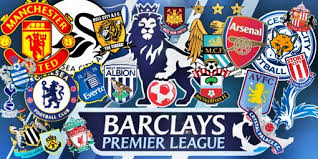Photo via Sportsstoreonline
During the first week of 2017, immediately following the New Year’s Eve celebration, I was fortunate to be able to spend ten days in London with my family. What a beautiful city. Centuries of history surrounded us at all times. London’s museums, in one of which I ran into Sports editor Louie Freda ‘17, provided a glimpse of the nearly thousand-year imprint laid by England’s ancestors. A few highlights of the trip included Big Ben, Parliament, Westminster Abbey, the Tower of London, the British Museum, and Wimbledon Lawn Tennis Club. What grabbed me most, and this is not to say that London’s history did not, is how passionate an entire nation is about one sport; Football, or soccer as we say in North America, is more than just a game in England; it is a way of life, a daily drive, and it wouldn’t be a stretch to say a lifelong love of many spectators and players alike.
My family and I spent one afternoon in the outer rim of London at Craven Cottage, the stadium home to Fulham Football Club. Fulham is a club with great history of American players: Brian McBride, Clint Dempsey, and Tim Ream, to name a few. It seemed fitting that anAmerican family serve as spectators to a club that has embraced some of our country’s best football talent over the past decade. The game was technical, fast-paced, and everything I had hoped for. I was beyond impressed by the talent I saw on the pitch that afternoon, and the amazing part was that this wasn’t even the highest level in England. There were still 20 teams full of players that were identified as being more talented than any player in this entire tier of football. This inspired me to unravel the complexity of the English football system.
English football is a national sensation, to say the least. Its popularity is spreading to the United States, without a doubt, but we are only breaching the surface of English football. The teams we are most familiar with play in the Barclay’s Premier League, the top tier. Teams in this tier include Manchester United, Chelsea, Liverpool, Manchester City, and Tottenham. There is a massive promotion and relegation system throughout the top four tiers in England. At the end of the season, which is in May, the bottom three teams in the Premier League standings are relegated to the second tier, which is the English Football League Championship. Teams in this league include Fulham, Newcastle, Brighton and Hove Albion, Blackburn, and Aston Villa. At the end of the season, the top two teams are automatically promoted to the Premier League. The teams that finish 3-6 qualify for the league playoff. The playoff is structured into two semifinal games, where #3 plays #6 and #4 plays #5. The winners play in the final, and the winner of the final obtains the third promotion into the Premier League. As in the Premier League, the bottom three teams are relegated to the lower league.
The third tier is the English Football League One and the fourth tier is the English Football League Two. Below these are the National Leagues, which are comprised of the fifth, sixth, and seventh tier. The relegation and promotion criteria are the same as the second, third and fourth tiers aforementioned. Even upon a glance, it is clear how integrated this sport is into the country. There are over 100 teams that have the potential to earn promotion and relegation throughout the leagues. It is truly an amazing structure. To put this into perspective, in the United States there are three professional tiers: Major League Soccer, the United Soccer League, and the North American Soccer League. The difference is that currently there is not a relegation or promotion system implemented.
Football requires an enormous amount of infrastructure and financial planning. England, as well as most leagues across Europe, follow this structure of relegation and promotion. It is remarkable to see just how many people are involved in the sport in another country. Maybe one day the United States will follow suit, but for now the sport in America must try and model itself after the best and the brightest in Europe.



